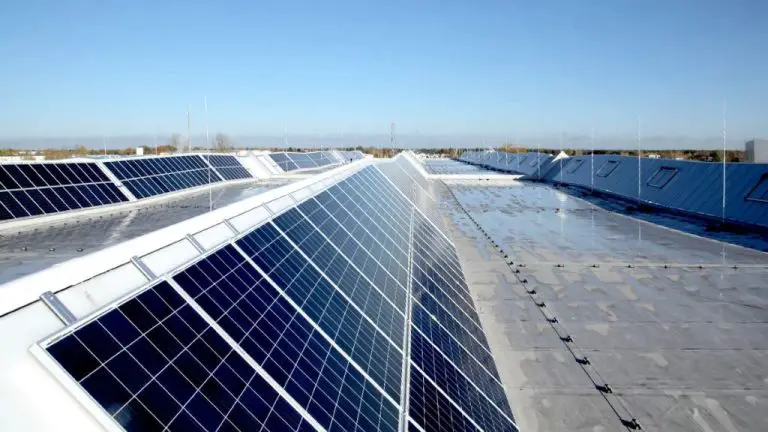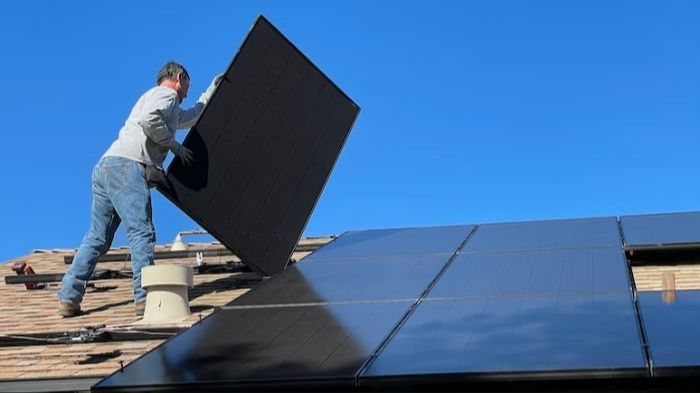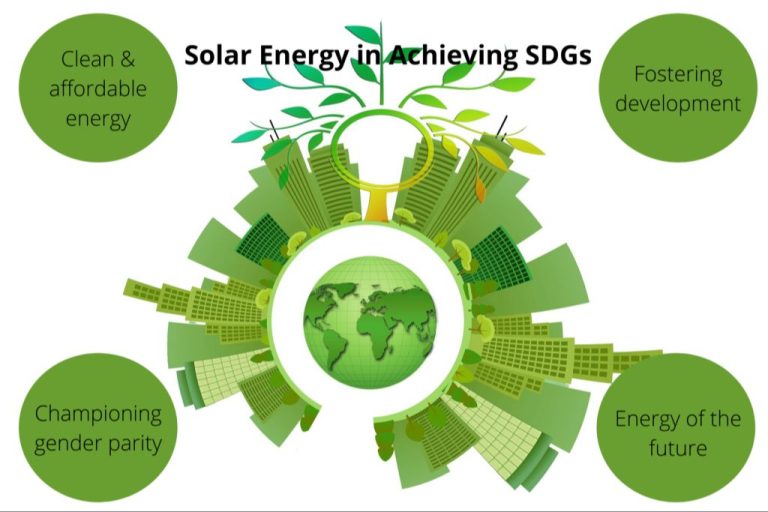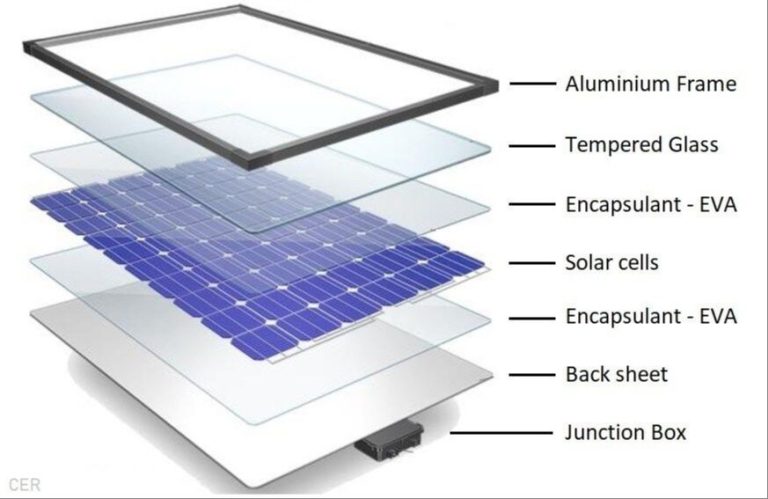Is Solar Energy Kinetic Or Potential
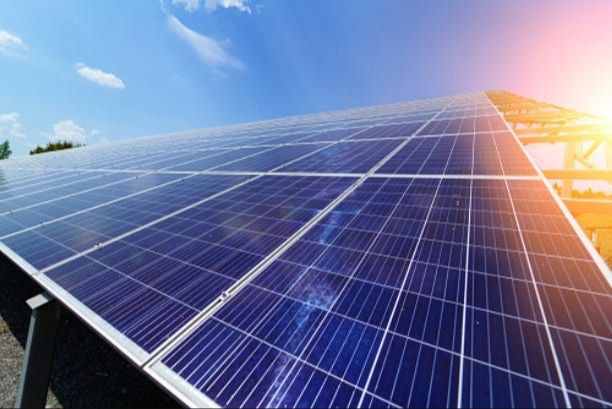
Potential and kinetic energy are two fundamental concepts in physics that describe the energy stored in a system and energy associated with motion, respectively. Potential energy is energy that is “stored” or latent in an object, system, or configuration due to position or arrangement. For example, a book sitting on a shelf has gravitational potential energy due to its position relative to the Earth’s surface. Kinetic energy is energy associated with motion. A moving object, like a rolling ball, has kinetic energy due to its motion and speed. The faster an object moves, the greater its kinetic energy. Understanding the difference between potential and kinetic energy is key to explaining many physical phenomena and power generation systems.
Potential Energy
Solar energy begins as photons from the sun that have potential energy. According to Is light energy potential or kinetic energy?, light energy contains potential energy in the form of electromagnetic radiation. When the photons from the sun reach Earth, they have potential energy that can be converted into other forms of energy like heat and electricity.
Photons are massless packets of electromagnetic energy. They do not have kinetic energy, which requires mass. But they do carry potential energy proportional to their wavelength/frequency according to Planck’s equation. This potential energy is then transferred in various ways here on Earth.
Conversion to Other Forms
Solar panels convert light energy into electrical energy through the photovoltaic effect. When photons from sunlight hit the solar cells in a panel, they transfer their energy to the electrons in the solar cell material, causing the electrons to break free of their atoms. The electrons that are knocked loose can then flow through the material to produce an electric current (How Do Solar Panels Work?, https://roofgnome.com/blog/solar/how-do-solar-panels-work/).
This process of converting light energy to electrical energy is known as the photovoltaic effect. It allows solar panels to absorb sunlight and generate direct current electricity without any moving parts or environmental impact (How Solar Works, https://sunbuiltsolarllc.com/how-solar-works). The photovoltaic effect is essential for enabling solar panels to harness the sun’s energy.
Kinetic Energy
Kinetic energy is the energy of motion. It refers to the movement of electrons, atoms, molecules, substances, and objects. Electricity contains kinetic energy in the form of moving electrons. When electrons move through a conductor, such as a wire, their kinetic energy is transmitted through the conductor. This flow of electrons creates electrical energy that can be used to power kinetic devices.
Some examples of kinetic electrical energy in everyday life include the following:
Electric motors – The electricity flowing into electric motors is converted into rotational kinetic energy to spin the motor. Examples include electric drills, blenders, and washing machine motors (1).
Electric vehicles – The kinetic energy from the moving electrons in the battery is converted into the linear kinetic energy that propels the vehicle down the road (2).
Electrostatic generators – These devices separate positive and negative charges to produce static electricity. The static buildup results in a spark discharge that converts the potential energy into kinetic energy (3).
So in summary, the motion of electrons in electricity can be harnessed to power kinetic devices all around us through the conversion of electrical energy to mechanical energy.
(1) https://www.techtarget.com/whatis/definition/kinetic-energy
(2) https://justenergy.com/blog/potential-and-kinetic-energy-explained/
(3) https://www.yourdictionary.com/articles/examples-kinetic-energy
Storing Potential Energy
One way to store potential energy is in batteries. Batteries store chemical potential energy which can later be released to produce electricity. This chemical potential energy comes from the chemical materials inside the battery, such as metals and electrolytes. According to the Clean Energy Institute, “Batteries store chemical potential energy which can be released to produce electrical energy, or electricity.” (https://www.cei.washington.edu/lesson-plans/aluminum-air-battery/) The chemical reactions that occur when a battery is used converts the stored chemical potential energy into kinetic energy in the form of electricity.
Comparisons
Solar energy, whether in potential or kinetic form, has some key differences when compared to other energy sources like fossil fuels, nuclear power, wind, and hydropower. Here are some of the main comparisons:
Fossil fuels like coal, oil, and natural gas provide high energy density and can generate electricity on demand, but they produce greenhouse gas emissions when burned (https://www.eia.gov/energyexplained/fossil-fuels/). Solar energy does not create any emissions, but relies on the intermittent sunlight.
Nuclear power plants utilize the immense potential energy stored in uranium atoms through fission to generate electricity without emissions. However, nuclear waste poses storage and safety concerns (https://www.eia.gov/energyexplained/nuclear/nuclear-power-and-the-environment.php). Solar energy does not produce hazardous waste.
Hydropower converts the kinetic energy of flowing water into electricity using turbines. It provides renewable and emissions-free energy like solar, but is geographically limited by suitable rivers and streams (https://www.eia.gov/energyexplained/hydropower/). Solar power can be installed in many more locations.
Overall, solar energy offers a clean and renewable energy source, but lacks the continuous generative capacity of fossil and nuclear power. With improved storage technology, solar can become an even more viable carbon-free energy solution.
Applications
Solar energy can be converted into kinetic energy in several useful applications. For example, solar panels can generate electricity that powers electric trains, converting solar energy into the kinetic energy of the moving train (Source). Solar-powered vehicles like cars, boats, and planes also transform solar energy into kinetic energy of motion. Solar thermal power plants use mirrors to concentrate heat from sunlight, which is then used to heat water and spin turbines, converting solar energy into mechanical rotational kinetic energy. Even simple technologies like solar cookers change solar radiation into kinetic energy as the heated water molecules move faster. Overall, solar energy can be harnessed in many ways to produce kinetic energy for transportation, electricity generation, and other uses.
Efficiency
The efficiency of solar energy refers to how much of the sun’s potential energy can be converted into usable kinetic energy in the form of electricity. This conversion process involves multiple steps, each with their own efficiencies that ultimately determine the overall efficiency of the solar energy system (Solar Performance and Efficiency).
At the most basic level, solar photovoltaic (PV) cells convert sunlight into direct current electricity. The efficiency rating of solar panels indicates what percentage of the sun’s energy striking the panel is converted into electricity. Most mass-market panels today have efficiencies around 15-20% (Understanding Solar Panel Performance Metrics). Higher efficiency panels are available but more expensive. Efficiency can be reduced by high temperatures, which is why cooling systems can improve overall efficiency.
Beyond the PV conversion, there are further efficiency losses in the system components like inverters, charge controllers, wires and batteries for storage. Altogether, a typical full solar energy system may only operate at around 10-15% end-to-end efficiency in converting the sun’s potential energy into usable kinetic energy (1.2 Efficiency of Conversion).
Ongoing research aims to improve the efficiency of both solar cells and overall systems. This includes developing new materials and technologies to optimize light absorption and electricity generation within the cells. Higher system efficiencies will make solar energy more viable and cost-effective.
Future Improvements
There are ongoing efforts to improve the efficiency and cost-effectiveness of solar energy conversion technologies. Some key areas of research and development include:
New photovoltaic materials such as perovskites that can convert sunlight to electricity more efficiently than traditional silicon solar cells. Perovskite solar cells have increased in efficiency from 3% in 2006 to over 25% today (https://en.wikipedia.org/wiki/Solar_energy_conversion). Further improvements in perovskite stability and manufacturing could enable widespread adoption.
Advances in solar thermal technology like concentrating solar power which uses mirrors to focus sunlight. Adding thermal energy storage allows concentrated solar plants to store heat and produce electricity even when the sun isn’t shining. New storage mediums and operating temperatures can improve efficiency and lower costs (https://onlinelibrary.wiley.com/doi/full/10.1002/adsu.202200115).
Hybrid systems that combine multiple solar technologies like photovoltaics and solar thermal energy to maximize efficiency. For example, solar panels can generate electricity while excess heat is captured and stored.
Improved materials and manufacturing processes to reduce costs. Economies of scale as adoption increases can also drive down solar costs over time.
Advanced solar forecasting models to better predict energy output from solar facilities. This allows grid operators to integrate more solar energy by anticipated daily peaks and valleys in solar production.
Overall, research and development focused on efficiency, storage, manufacturing, integration and cost reduction will enable solar energy to play an increasing role in the global transition to renewable energy (https://ispf2.unimib.it/).
Conclusion
In summary, solar energy starts off as radiant light from the sun, which can be considered a form of kinetic energy. Through the use of technologies like photovoltaic panels and concentrated solar plants, this kinetic energy is converted into electrical potential energy. The potential energy can then be stored for later use, such as in batteries or other storage mediums. While kinetic energy and potential energy are different forms, solar energy utilizes both in its process of being harnessed for human use. Improvements in solar efficiency and energy storage will further increase the viability and adoption of solar power in the future.
Solar energy highlights the flexible interplay between different energy types like kinetic and potential. With thoughtful systems design and technological improvements, sunlight’s initial kinetic energy can be optimized for capture and converted into usable potential energy to meet society’s electrical demands in an increasingly renewable and sustainable manner.

